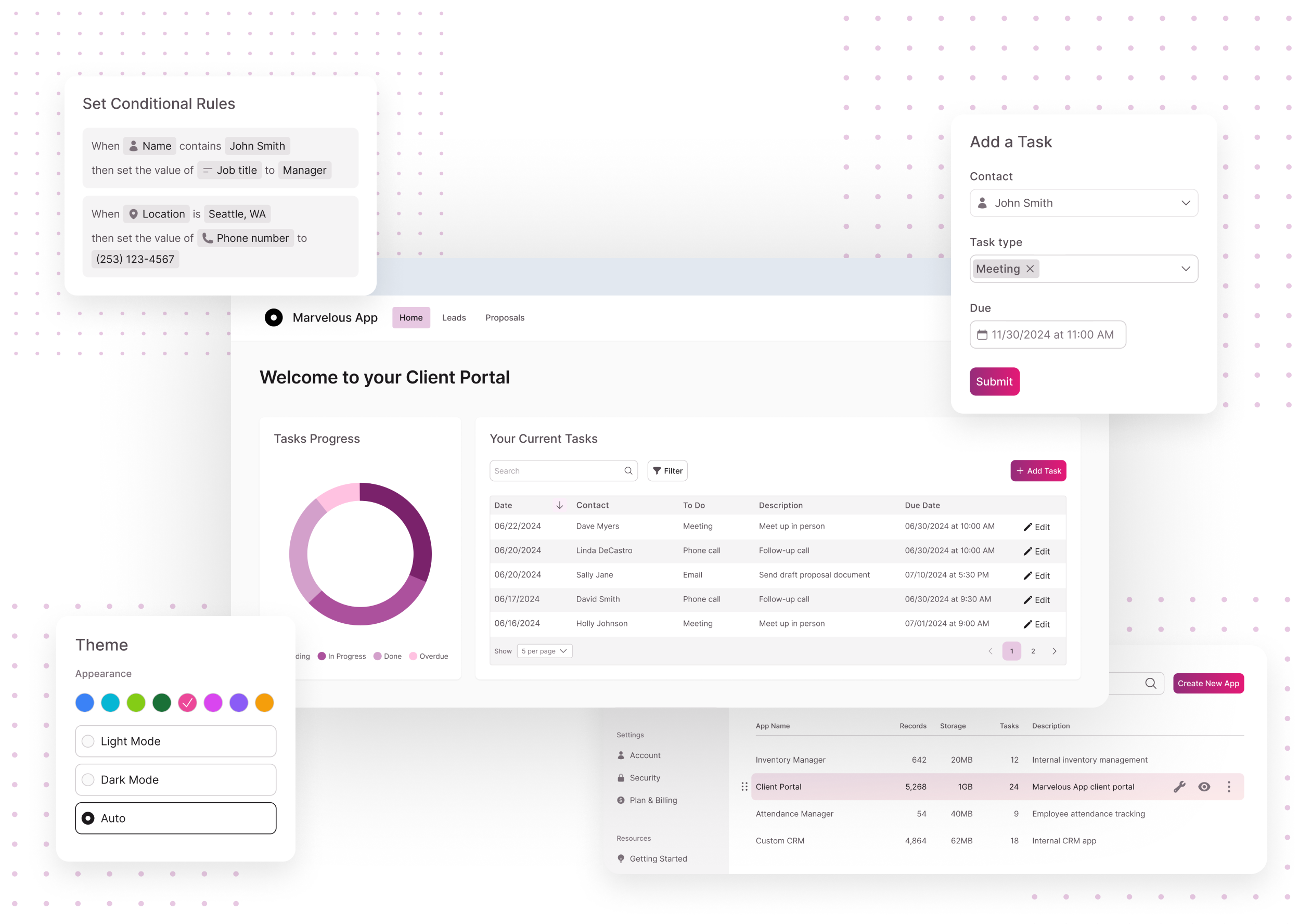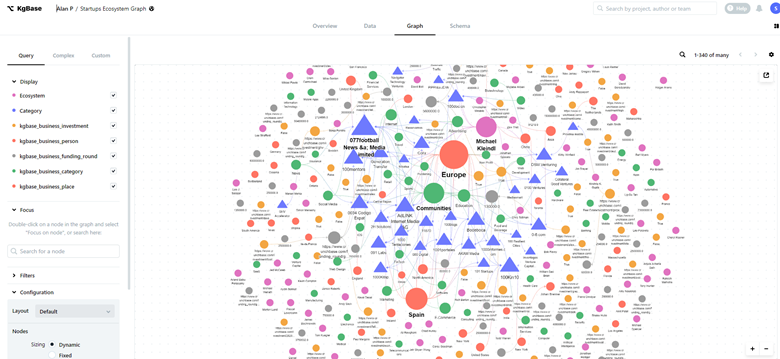Open the Power of No-Code for Open Platform Data Source Creation
Open the Power of No-Code for Open Platform Data Source Creation
Blog Article
A Comprehensive Overview to Carrying Out Scalable Databases Without the Need for Coding Know-how
In the modern landscape of information monitoring, the capability to carry out scalable databases without coding expertise is coming to be significantly important for companies of all sizes. This overview aims to brighten the procedure, concentrating on straightforward tools and user-friendly interfaces that demystify database configuration. By examining crucial features, reliable methods for application, and ideal techniques for continuous monitoring, we will address exactly how even non-technical users can with confidence browse this facility terrain. What are the essential elements that can truly equip these individuals to utilize scalable databases efficiently? The responses may redefine your approach to information administration.
Comprehending Scalable Databases
In the world of modern-day data management, scalable data sources have actually become an essential service for organizations looking for to deal with boosting volumes of information effectively. These data sources are developed to fit development by allowing for the smooth addition of resources, whether via horizontal scaling (adding more machines) or upright scaling (updating existing makers) This versatility is vital in today's fast-paced electronic landscape, where information is created at an extraordinary price.
Scalable databases typically make use of distributed architectures, which enable data to be spread out across multiple nodes. This circulation not only boosts performance however additionally gives redundancy, ensuring information availability also in the occasion of equipment failings. Scalability can be an essential aspect for different applications, including ecommerce platforms, social media networks, and huge information analytics, where customer need can fluctuate dramatically.
Additionally, scalable data sources usually feature durable information uniformity designs that stabilize efficiency and reliability. Organizations needs to consider their specific needs, such as read and create speeds, information stability, and fault resistance when selecting a scalable database service. Inevitably, recognizing the underlying principles of scalable data sources is essential for services intending to thrive in an increasingly data-driven world.
Trick Attributes to Search For
When reviewing scalable databases, numerous key attributes are paramount to guaranteeing optimum performance and dependability. First and leading, consider the design of the data source. A dispersed style can boost scalability by enabling information to be kept throughout multiple nodes, promoting seamless information accessibility and processing as need increases.
Another critical function is data partitioning, which makes it possible for effective administration of huge datasets by separating them into smaller sized, extra manageable pieces (no-code). This approach not just boosts efficiency yet additionally simplifies source allocation
Furthermore, search for robust duplication capabilities. This function makes certain information redundancy and high accessibility, lessening downtime throughout maintenance or unforeseen failures.
Performance monitoring tools are also vital, as they give real-time insights into system health and wellness and operational effectiveness, enabling prompt modifications to maintain ideal efficiency.

User-Friendly Data Source Devices
Simpleness is an essential component in the design of user-friendly database tools, as it improves availability for individuals with varying levels of technical experience. no-code. These tools prioritize user-friendly user interfaces, making it possible for individuals to create, handle, and inquiry databases without calling for considerable shows expertise
Secret functions normally include drag-and-drop performance, visual information the original source modeling, and pre-built layouts that improve the arrangement procedure. Such tools usually provide led tutorials or onboarding processes that promote user involvement and decrease the knowing contour. Furthermore, i thought about this seamless assimilation with prominent information sources and solutions makes certain that customers can conveniently import and export information, further simplifying operations.

Additionally, durable assistance and neighborhood sources, such as discussion forums and paperwork, enhance the user experience by providing support when required. On the whole, user-friendly database tools encourage organizations to harness the power of scalable databases, making information management obtainable to everybody involved.
Step-by-Step Execution Guide
How can organizations efficiently execute scalable databases to satisfy their expanding information demands? The process begins with identifying certain data needs, including the quantity, variety, and speed of information that will be refined. Next, organizations need to examine user-friendly data source tools that supply scalability features, such as cloud-based options or managed database solutions.
Once the ideal device is chosen, the following action includes setting up the database atmosphere. This consists of establishing up circumstances, defining individual permissions, and establishing information structures that line up with organization objectives. Organizations must after that migrate existing data into the brand-new system, making sure information integrity and minimal disturbance to procedures.
Post-migration, conducting detailed testing is important; this includes performance testing under various tons conditions to make sure the system can deal with future growth - no-code. Furthermore, it is essential to educate personnel on the database monitoring interface to assist in seamless use
Finest Practices for Management
Effective management of scalable data sources calls for a calculated technique that prioritizes recurring surveillance and optimization. To achieve this, organizations need to implement durable surveillance tools that give real-time understandings right into database performance metrics, such as question reaction times, source use, and transaction throughput. On a regular basis analyzing these metrics can aid recognize traffic jams and areas for improvement.

Regular backups and calamity recovery plans are necessary to safeguard data stability and accessibility. Developing a regular for testing these backups will certainly make certain a reputable healing procedure in instance of an unexpected failure.
Additionally, efficiency adjusting need to be a continuous procedure. Changing indexing methods, enhancing queries, and scaling resourcesâEUR" whether up and down or horizontallyâEUR" will aid maintain optimum efficiency as use demands evolve.
Finally, fostering a hop over to these guys culture of knowledge sharing amongst employee will certainly allow continual knowing and adjustment, making sure that the management of scalable databases continues to be reliable and efficient in time.
Verdict
In final thought, the implementation of scalable databases can be successfully attained without coding competence via the usage of instinctive interfaces and easy to use tools. By sticking to the laid out techniques for configuration, data migration, and performance testing, individuals can browse the intricacies of data source monitoring easily. Emphasizing best methods for continuous upkeep and cooperation more boosts the ability to manage scalable databases efficiently in a rapidly progressing data-driven environment.
In the contemporary landscape of information management, the ability to implement scalable databases without coding know-how is coming to be significantly vital for organizations of all sizes.In the realm of modern information administration, scalable databases have emerged as an essential option for companies looking for to handle boosting quantities of info effectively.Moreover, scalable data sources usually feature robust data consistency models that balance performance and dependability.How can companies successfully execute scalable data sources to satisfy their growing information needs? Next off, organizations need to review easy to use database tools that use scalability attributes, such as cloud-based remedies or managed data source services.
Report this page